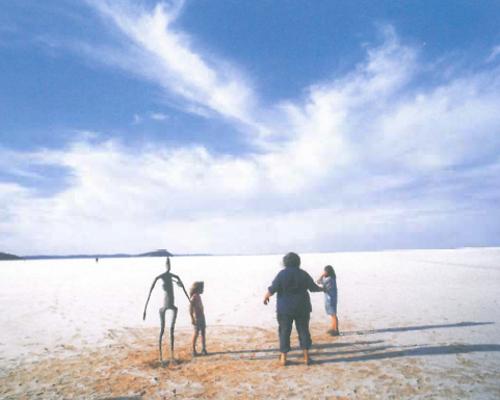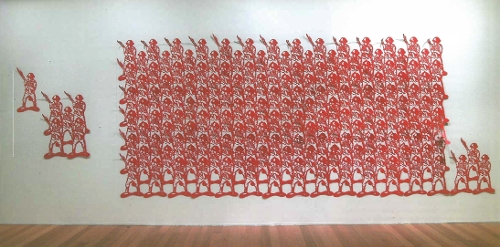The packaging of these essays is incommensurate with the high standard of writing and analysis that distinguishes the greater part of Stuart Koop's collection. The ten point type had this reviewer scrambling for a high voltage reading lamp and even then it was a strain to the eye. That a book so intricately concerned with the visual should be optically hostile brings me to my other gripe: the thumbnail graphics that make do as illustrations and the failure, in some essays, to reproduce images that are central to the discussion. The result is an uninviting production that looks turgid. Fortunately, the appearance proves deceptive.
Money was obviously in short supply, and I guess the publisher, Melbourne's Centre for Contemporary Photography (CCP), would, in an ideal world, have aimed for a more lavish production. But as anyone will tell you today's publishing environment is far from ideal and many worthy books never see the light of day. This said, I wonder if the CCP were not a little unambitious on this occasion. Equipped with copy from some of the country's best art scholars and cultural critics, a co-publication deal with an established press might have permitted decent reproductions, some breathing space for the text, greater distribution and the ironing out of some minor though irritating errors.
I stress this because many essays are really rewarding. Paul Carter makes dazzling connections between the camera obscura and an Etruscan tomb; Helen Grace (who should publish more) discerns a frail masculinity in the press photos of the business pages; and Brian Massumi, translator of Deleuze, considers the relationship between vision and the other senses through a 'philosophical reading' of some weird experiments in perceptual psychology.
Vivien Johnson's 'Spirit Stealing and the Decay of Aura', a discussion of Aboriginal copyright in the theatre of mass reproduction, is a classic essay – essential reading for anyone considering the vexing questions that emerge when sacred designs become commodities. Johnson's endeavour to think this through from an indigenous perspective brings, as a by-product, an intelligent critique of Walter Benjamin who, with Roland Barthes, figures very prominently in these pages. There is scarcely a contributor who fails to mention one if not both of these critics. Between them they really did establish master texts for discourse on photography – a curious reality when you consider that photographs, while objects of considerable fascination, were not the chief preoccupation of either writer.
In a review so short it is impossible to gloss all nineteen essays. So a few generalised comments must suffice.
One thing that struck me about these papers, developed from presentations held under the CCP's public lecture program, is the extent to which photography, in its many manifestations, still inspires perceptive inquiry and imaginative engagement. Numerous contributors, most of whom emerged in the late 1980s, write the kind of pithy, thoughtful and intellectually dexterous essay characteristic of Art & Text during that period. (This is no putdown by my standards.) Fortunately, however, there are few signs of the tortured syntax and theoretical gobbledygook that still passed as criticism well into the 1990s. Perhaps we really have turned a corner in that regard.
Interesting, also, is the status of contemporary photographic practice as reflected in these pages. While Geoff Batchen writes perceptively (albeit briefly) about Anne Ferran's recent photograms, and Catriona Moore discusses an array of contemporary practitioners including Helen Grace and Brenda Croft in her essay on photo documentary, the general pitch is historical, not current. The increasing fetishisation of fine art photography, and its recent boom in the auction houses, is nowhere considered. And only in the final essay - Scott McQuire's fine meditation on the modern city and the photograph - is anything at all interesting said about digitisation.
One book can't do everything, though it does provide a fascinating index to critical thinking in Australia. It is also a tribute to Stuart Koop's directorship of the CCP and the forum he nurtured during the period 1996-99 when these lectures were given.












